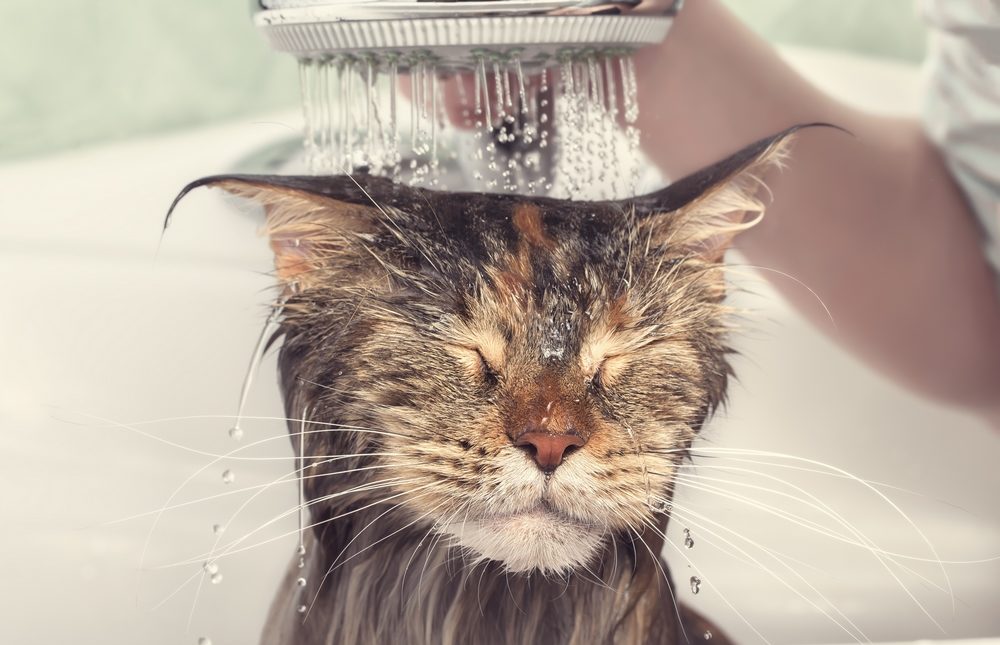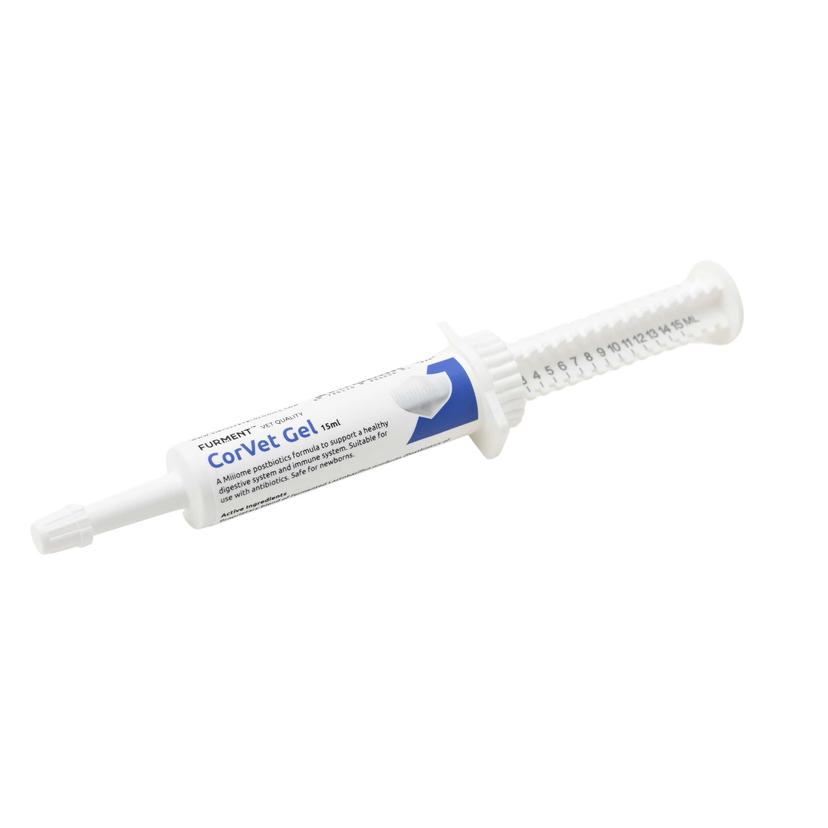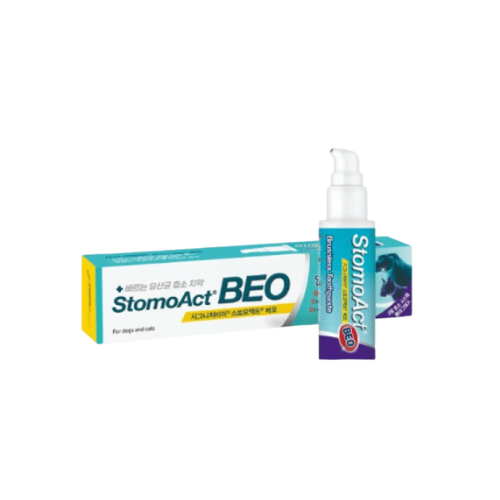Cats are known for their impeccable grooming habits, spending a significant amount of time keeping themselves clean. While felines are generally self-sufficient in maintaining their hygiene, there may be instances when bathing becomes necessary. In this blog post, we will delve into how often you should shower your cat. We will also address common concerns and questions of cat owners while providing valuable insights to ensure a positive bathing experience for both you and your feline companion.
Understanding Cat’s Natural Grooming Abilities
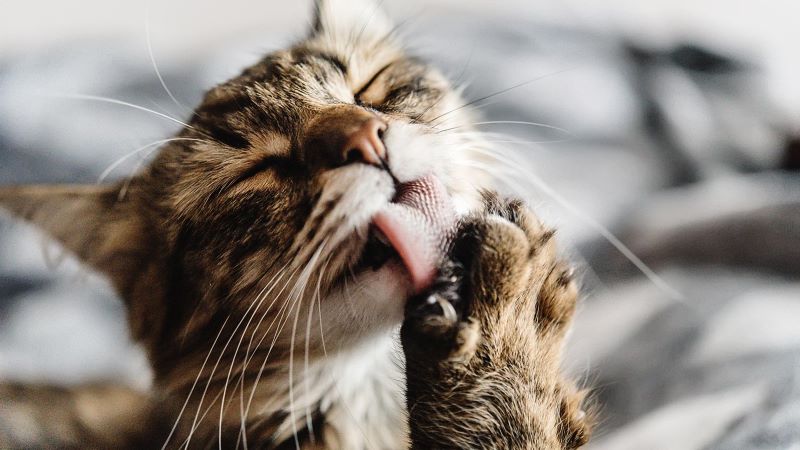
Cats are known for their fastidious grooming habits and possess remarkable natural grooming abilities. They have a unique and sophisticated grooming system that allows them to maintain their cleanliness and impeccable appearance. Here are some key aspects of a cat’s natural grooming abilities:
Tongue and Papillae
A cat’s tongue is covered with tiny, backward-facing barbs called papillae. These papillae help in grooming by acting as natural combs. When a cat licks its fur, these barbs catch loose hair, dirt, and debris, removing them from the coat.
Cleaning and Spreading Natural Oils
As cats groom themselves, their tongues distribute natural oils produced by their skin. These oils help to keep the coat clean, shiny, and waterproof. By spreading these oils, cats maintain the health and condition of their fur.
Flexibility and Agility
Cats are incredibly flexible and agile, thanks to their highly developed skeletal structure and muscles. They can contort their bodies into various positions, making it easier for them to groom hard-to-reach areas like their back, neck, and hindquarters. Their flexibility allows them to reach every part of their body efficiently.
Self-Cooling Mechanism
Cats lick their fur not only for cleanliness but also to regulate their body temperature. When cats groom, the saliva on their fur evaporates, providing a cooling effect on their skin. This self-cooling mechanism helps cats stay comfortable, especially in warmer weather.
Blood Circulation and Massage
When cats groom themselves, they stimulate blood circulation in their skin. The act of licking and grooming also provides a gentle massage, which can be soothing and relaxing for them.
Removal of Tangles and Mats
Cats’ grooming abilities are particularly beneficial for managing their long or dense coats. By licking their fur, cats can work out tangles and mats, preventing them from becoming more severe. However, severe matting may require human intervention and professional grooming. This usually occurs when the cat is unwell, too old or too obese to reach certain areas of the body by themselves.
Grooming Social Bonds
Cats are meticulous groomers not only for self-care but also for social interactions. Mutual grooming, known as allogrooming, is a bonding behaviour among cats. It helps establish and reinforce social relationships, trust, and camaraderie between cats living together.
Understand Addition Grooming for Cats

While cats are generally self-sufficient groomers, there are situations where they may require additional grooming care beyond their regular grooming routine. These situations include:
Long-Haired Breeds
Cats with long hair, such as Persians or Maine Coons, often require more frequent and thorough grooming due to their dense and prone-to-matting coats. Regular brushing and combing are necessary to prevent tangles, mat formation, and discomfort for the cat.
Senior Cats
Older cats may develop mobility issues or arthritis that can hinder their grooming abilities. They may require assistance with grooming, particularly in hard-to-reach areas like the back or hindquarters. Regular brushing can help remove loose hair, prevent matting, and keep their coat clean and healthy.
Obese or Overweight Cats
Cats that are overweight or obese may struggle to reach certain parts of their body for grooming. They may require assistance with grooming, especially in areas where skin folds may trap dirt, moisture, or debris. Regular brushing and cleaning of these areas can prevent skin infections and maintain their hygiene.
Cats with Skin Conditions
Some cats may develop skin conditions, such as allergies, dermatitis, or fungal infections, which require additional grooming care. Specialised shampoos, prescribed by a veterinarian, may be necessary to treat these conditions and maintain the cat’s skin health.
Shedding Seasons
Cats may experience increased shedding during certain seasons, such as spring and fall. Additional grooming care, such as more frequent brushing or using a shedding tool, can help manage excessive shedding, prevent hairballs, and maintain a clean environment.
Cats with Dental Issues
Cats with dental problems, such as gum disease or missing teeth, may require additional grooming care. They may have difficulty grooming their face and mouth properly, leading to plaque buildup, bad breath, and oral health issues. Regular dental care, including brushing their teeth or wiping their gums, can help maintain their oral hygiene.
Cats with Specific Grooming Needs
Some cats may have specific grooming needs due to their breed, coat type, or individual characteristics. For example, breeds with folded ears, like Scottish Folds, may require gentle cleaning of their ear folds to prevent wax buildup or infections. Hairless breeds, like Sphynx cats, require regular bathing to remove oils and maintain their skin health.
Factors to Consider Before Bathing Your Cat
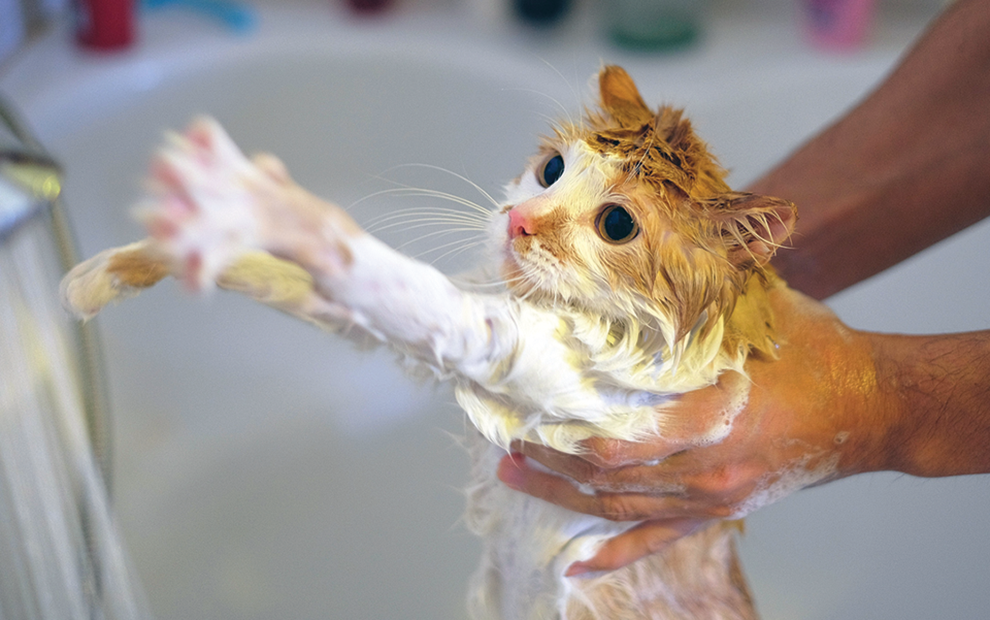
Before bathing your cat, it’s important to consider several factors to ensure a safe and successful bathing experience. Taking note of these factors will help you prepare adequately and minimize stress for both you and your cat. Here are some key factors to consider:
Health and Age
Evaluate your cat’s overall health condition. If your cat has any pre-existing medical conditions, skin sensitivities, or is recovering from surgery, it’s crucial to consult with a veterinarian before bathing. They can provide guidance on whether bathing is suitable and recommend any specific products or precautions.
Behavioural Considerations
Understand your cat’s behaviour and temperament. While some cats may tolerate or even enjoy baths, others may become stressed, anxious, or aggressive. If your cat has a strong aversion to water or bathing, you may need to explore alternative grooming methods or seek assistance from a professional groomer.
Coat Type and Length
Consider your cat’s coat type and length. Cats with longer hair, such as Persians or Maine Coons, may require more frequent baths to prevent matting and hairballs. Short-haired breeds generally require less frequent bathing. Adjust the bathing frequency based on your cat’s specific coat needs.
Pre-Bath Preparation
Before bathing, groom your cat to remove any tangles, mats, or loose hair. Brushing or combing your cat’s coat helps prevent further matting during the bath and makes the process more comfortable for your cat.
Bathing Area and Supplies
Choose a suitable bathing location that is warm, quiet, and secure. A bathroom or utility sink with non-slip surfaces is often a good choice. Gather all the necessary supplies before starting, including cat-friendly shampoo, warm water, towels, a non-slip mat or towel for the bathing surface, and any additional grooming tools recommended for your cat’s specific coat type.
Water Temperature
Use warm water during the bath, ensuring it is not too hot or too cold. Cats are sensitive to temperature, so test the water using your wrist or elbow to ensure it is comfortable for your cat.
Gentle Approach and Positive Reinforcement
Approach the bathing process calmly and gently. Speak softly to your cat, use slow movements, and provide reassurance throughout the process. Using positive reinforcement techniques, such as treats or praise, can create a positive association with bathing.
Protecting Sensitive Areas
Take care to protect your cat’s ears, eyes, and nose during the bath. Place a cotton ball in each ear to prevent water entry, avoid getting water or shampoo directly in their eyes, and use a damp cloth to clean their face.
Post-Bath Drying
After the bath, thoroughly dry your cat using towels or a hairdryer on a low, gentle setting. Ensure they are kept in a warm and comfortable environment until they are completely dry.
By considering these factors and taking the necessary precautions, you can help ensure a positive bathing experience for your cat while maintaining their comfort and well-being. Do monitor your cat’s behaviour during and after the bath and seek professional guidance if needed. Always remember to prioritise your cat’s comfort and well-being when making grooming decisions.
How Often Should You Bathe Your Cat?

In general, most cats do not require regular bathing if they are healthy and have no specific issues. A bath every few months or when necessary should suffice. This ensures that their coat stays clean without compromising their natural oils, which are important for their skin health. Over-bathing can strip their coat of natural oils, leading to dry skin and potential skin problems. However, there are certain situations where it is important for cats to have baths.
Allergies
If your cat suffers from allergies, regular bathing with hypoallergenic shampoos can help alleviate skin irritation and remove allergens.
Fleas or Parasites
If your cat has fleas or other external parasites, bathing them with a suitable flea shampoo can be an effective part of the treatment plan.
Accidental Contamination
If your cat encounters a toxic substance, such as motor oil or chemicals, prompt bathing is crucial to prevent ingestion or further skin absorption.
Skin Conditions
Cats with certain skin conditions, such as dermatitis or fungal infections, may require medicated baths as recommended by a veterinarian. These baths can help soothe the skin, reduce inflammation, and promote healing.
Obesity or Mobility Issues
Overweight or arthritic cats may have difficulty reaching certain areas for grooming. Occasional bathing can help maintain cleanliness and prevent skin problems in such cases.
Odour Control
Cats can develop unpleasant odours over time, particularly if they have rolled in something foul-smelling or if they have certain medical conditions. Bathing can help eliminate strong odours and leave your cat smelling fresh and clean.
Bathing Tips for a Positive Experience
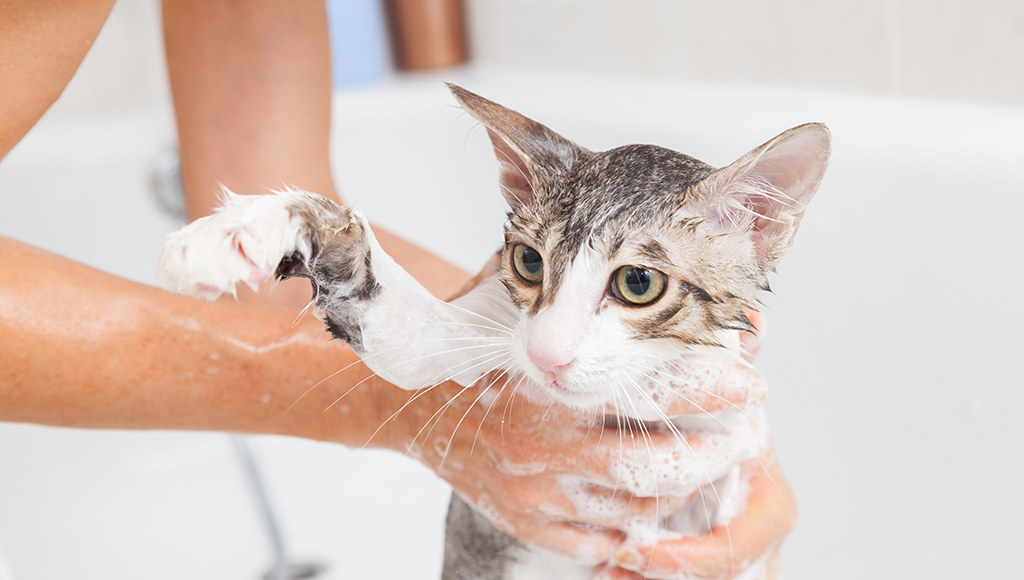
Bathing a cat can be a challenging task, but with the right approach, you can make it a positive and stress-free experience for both you and your feline friend. Here are some tips to help you achieve a successful and enjoyable bathing session:
Start Early and Gradually
Introduce your cat to bathing at a young age, if possible, to help them become accustomed to the process. If you have an adult cat who hasn’t been bathed before, start with short grooming sessions and gradually progress to bathing over time.
Use Positive Reinforcement
Create a positive association with bathing by using treats, praise, and rewards. Offer treats and verbal encouragement before, during, and after the bath to reward your cat’s cooperation and good behaviour.
Prepare the Environment
Choose a quiet and secure bathing area where your cat feels comfortable. Place a non-slip mat or towel in the sink or tub to provide stability and prevent slipping. Close the bathroom door or any escape routes to keep your cat contained and reduce anxiety.
Gather Supplies Beforehand
Have all the necessary bathing supplies within reach before you start. This includes cat-specific shampoo, warm water, towels, a brush or comb, and any other grooming tools you may need. Being prepared ensures a smoother and more efficient bathing process.
Use Cat-Friendly Products
Use a mild, cat-specific shampoo that is formulated for their skin pH. Avoid using human shampoos or products that may contain harsh chemicals that can irritate their skin. Consult with your veterinarian for product recommendations if your cat has specific skin conditions.
Maintain a Calm Demeanour
Cats are highly attuned to their owner’s emotions. Stay calm and composed throughout the bathing process to help your cat feel more relaxed. Speak softly and use a gentle tone to soothe your cat during the bath.
Gradual Water Introduction
Start by wetting your cat’s body gradually, using a handheld spray nozzle or a cup of water. Begin with their paws and lower body, gradually moving up to their back and head. Avoid pouring water directly onto their face.
Gentle Handling
Handle your cat with care and avoid rough movements. Support their body properly, keeping a firm grip but without squeezing or restraining them too tightly. Be mindful of their comfort and any signs of stress or discomfort.
Short and Efficient Baths
Keep the bathing sessions short to minimise stress. Aim for a quick and efficient bath, focusing on the necessary areas while ensuring thorough rinsing to remove all shampoo residue.
Post-Bath Comfort
After the bath, gently wrap your cat in a warm, dry towel and pat them dry. Ensure they are kept in a warm and quiet room until they are completely dry. Provide a cozy hiding spot or a favourite blanket to help them relax and recover from the experience.
Remember, not all cats will enjoy bathing, and some may never fully embrace it. If your cat consistently shows extreme distress or aggression during baths, it may be best to consult with a professional groomer or your veterinarian for alternative grooming options.
With patience, positive reinforcement, and a gentle approach, you can help create a more positive bathing experience for your cat and maintain their cleanliness and well-being.
Conclusion
While cats are generally adept at self-grooming, there are instances where bathing becomes necessary. Understanding your cat’s specific needs, preferences, and health conditions will guide you in determining the appropriate frequency of bathing. By following the tips provided and approaching the process with patience and care, you can ensure a positive bathing experience for your feline companion. However, do remember to consult your veterinarian for guidance on any health concerns or specific grooming requirements your cat may have. Check out ZumShop for vet-approved supplies to aid in your cat’s grooming too!


